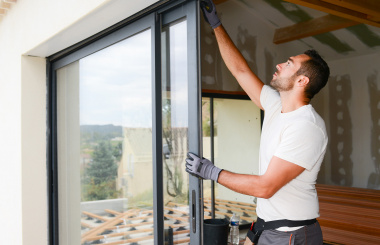Understanding Window Material Options
Choosing the suitable window material for your home is crucial in ensuring durability, energy efficiency, and aesthetics. With various materials available, it can be challenging to determine which one best suits your needs. This blog post will explore the different types of window materials and their pros and cons, helping you make an informed decision for your home improvement project.
Vinyl Windows
Vinyl windows are made of PVC (polyvinyl chloride) material, making them cost-effective, low-maintenance, and energy-efficient. They are available in various colors and styles and have become a popular choice for homeowners due to their durability, weather resistance, and sound insulation properties. They are also easy to clean, do not require painting, and offer excellent energy efficiency ratings, making them an eco-friendly option.
Pros:
- Affordable: Vinyl windows are often the most budget-friendly option, making them an attractive choice for homeowners.
- Low maintenance: Vinyl is resistant to rotting, peeling, and fading, requiring minimal upkeep.
- Energy-efficient: Vinyl windows offer excellent insulation, reducing energy costs.
Cons:
- Limited color options: Vinyl windows typically come in fewer colors compared to other materials.
- Less eco-friendly: Vinyl is a non-renewable resource and can release toxic chemicals when burned.
Wood Windows
Wood windows have been a classic choice for centuries due to their natural beauty, versatility, and insulation properties. They are available in different wood species, such as pine, oak, and mahogany, and can be painted or stained to match your home's decor. They also provide excellent insulation, making them ideal for colder climates. However, wood windows require regular maintenance, such as painting and sealing, to prevent rot and insect damage and ensure longevity.
Pros:
- Aesthetic appeal: Wood windows have a timeless, natural look that many homeowners find appealing.
- Excellent insulation: Wood is a natural insulator, providing excellent energy efficiency.
- Customizable: Wood windows can be painted or stained to match any design preference.
Cons:
- Higher maintenance: Wood windows require regular maintenance, including painting and sealing, to prevent rot and warping.
- Cost: Wood windows can be more expensive than other window materials.
Aluminum Windows
Aluminum windows are made of aluminum frames, making them strong, durable, and lightweight. They are corrosion-resistant and require minimal maintenance, making them ideal for coastal regions. Aluminum windows are available in a range of colors and styles, providing versatility in design. However, they are not as energy-efficient as other options and conduct heat, making them unsuitable for colder climates.
Pros:
- Durability: Aluminum windows are strong and corrosion-resistant; this makes them durable.
- Modern appearance: Aluminum windows have a sleek, contemporary look that complements modern home designs.
- Lightweight: Aluminum is a lightweight material, making installation easier.
Cons:
- Poor insulation: Aluminum is a poor insulator, potentially increasing energy costs.
- Prone to condensation: Aluminum windows can be susceptible to condensation, which may cause mold or mildew.
Fiberglass Windows
Fiberglass windows are a relatively new option, made of composite materials consisting of fiberglass and resin. They are strong, durable, and energy-efficient, providing excellent insulation and noise-reduction properties. They are available in different colors and styles and can mimic the look of wood without maintenance. Fiberglass windows are also resistant to warping, rotting, and insects, making them a long-lasting investment. However, they are more expensive than vinyl or aluminum windows.
Pros:
- Strong and durable: Fiberglass windows are robust and resistant to warping, rotting, and cracking.
- Energy-efficient: Fiberglass provides excellent insulation, contributing to energy savings.
- Low maintenance: Fiberglass windows require minimal upkeep and can be easily painted.
Cons:
- Cost: Fiberglass windows can be more expensive than other window materials.
- Limited availability: Fiberglass windows may not be as readily available as other options.
Summary
When choosing the suitable window material for your home, weighing the pros and cons of each option is essential. Vinyl windows are affordable and low maintenance, while wood windows offer aesthetic appeal and excellent insulation. Aluminum windows provide durability and modern appeal, and fiberglass windows boast strength and energy efficiency. Considering these factors, you can make the best choice for your home improvement project.
Understanding the different types of window materials and their pros and cons is crucial in selecting the perfect windows for your home. Each material has unique benefits and drawbacks, so it's essential to consider factors such as durability, energy efficiency, and aesthetics before making your final decision.
Get Quotes on Window Materials Today
Ready to upgrade your windows? Click on the link to get quotes about "The Different Types of Window Materials and Their Pros and Cons" and make an informed decision for your home improvement project today!







Updated April 11, 2023